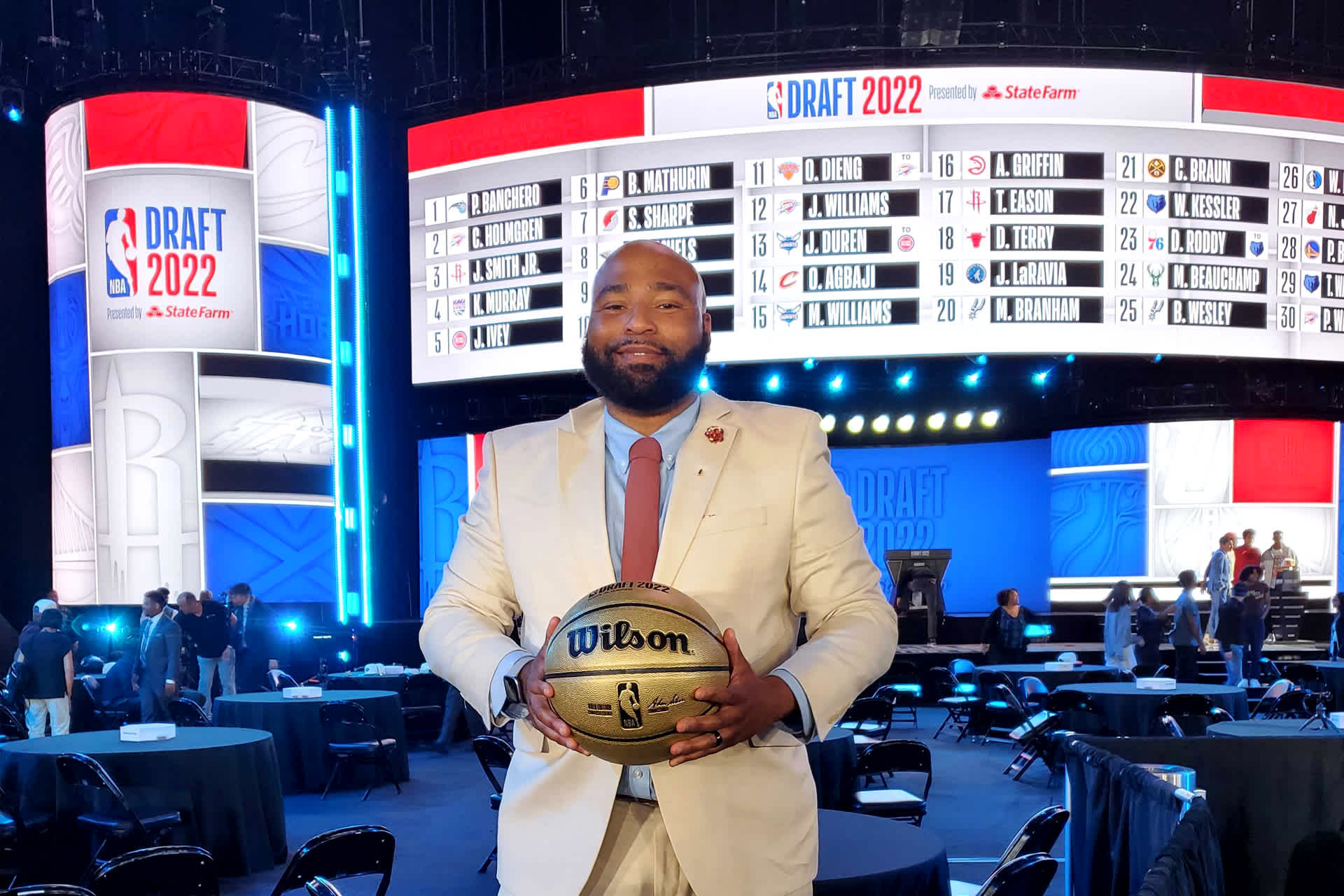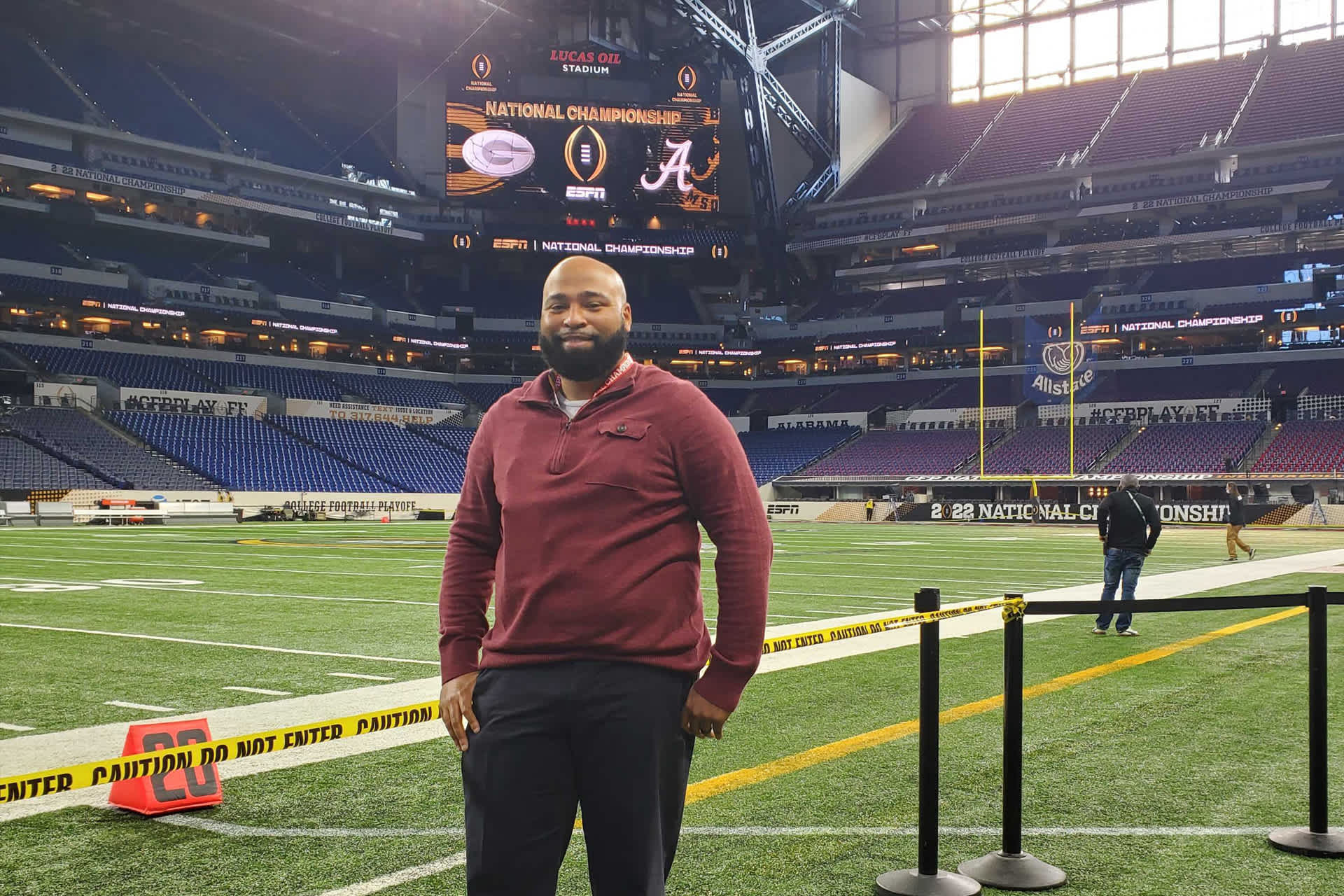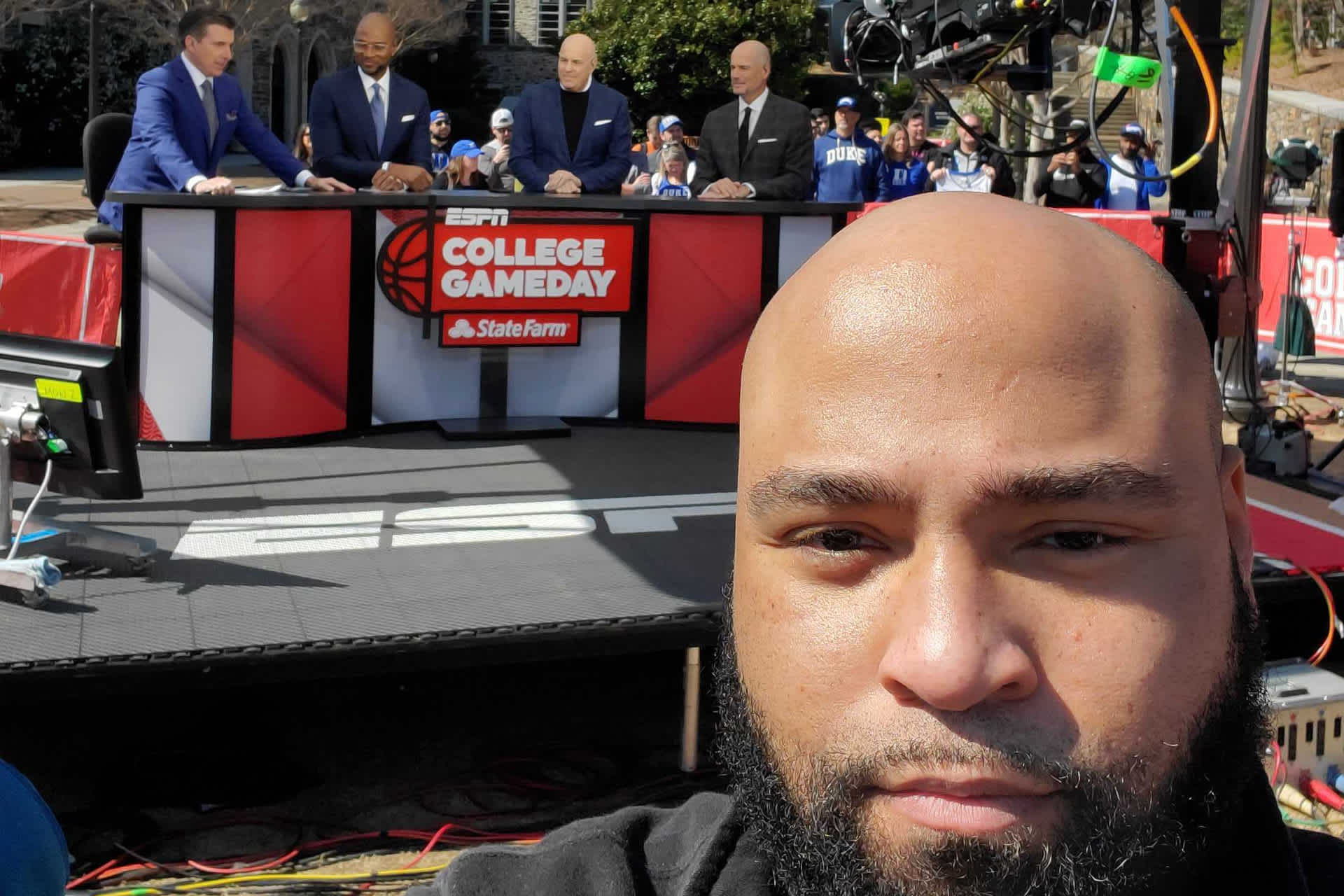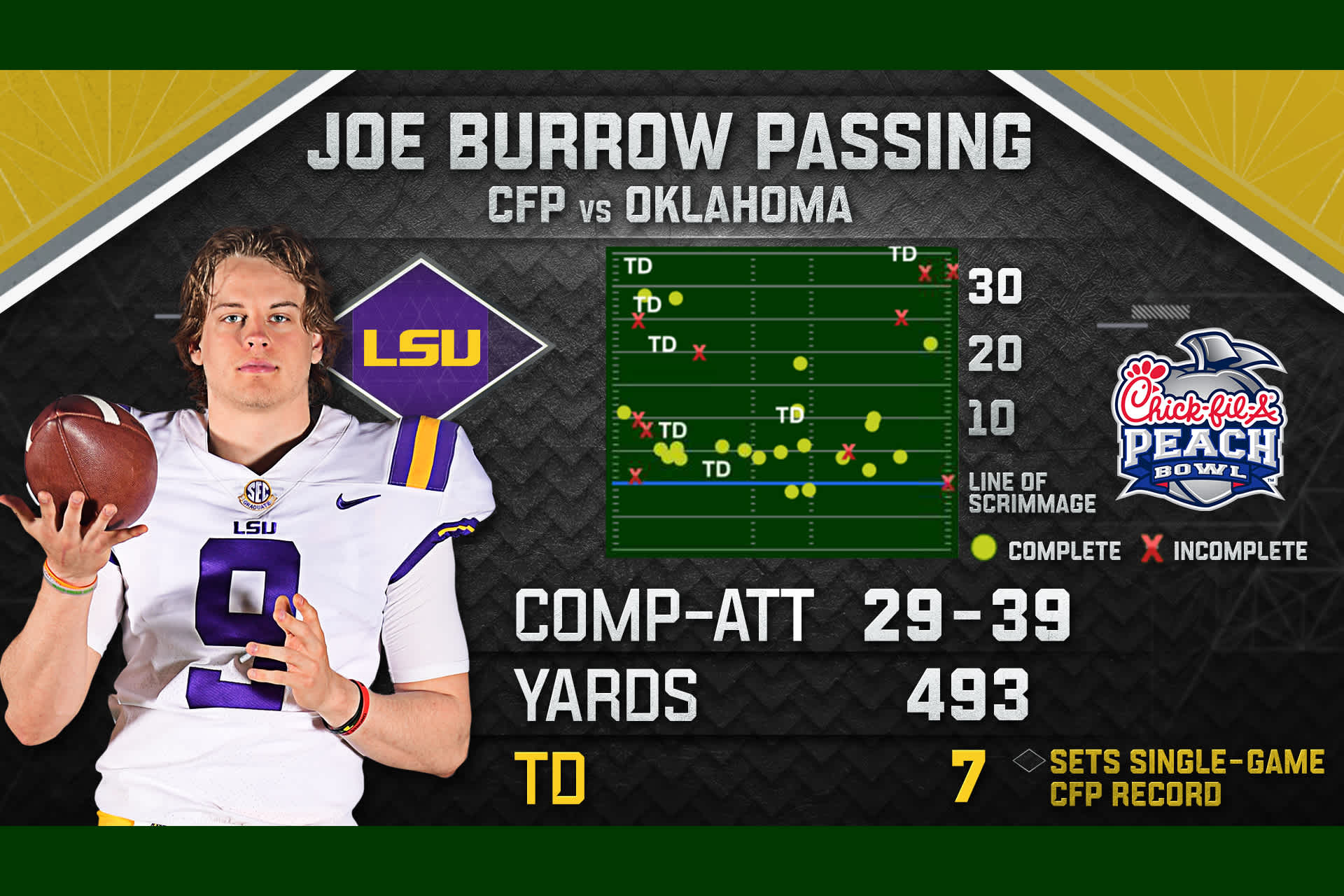By the Numbers

Sometimes, your dream job is not the one you expected.
When Gil Bransford was a kid, he dreamed of being a sports announcer at ESPN. “I wanted to be in front of the camera,” he says. “Growing up in Flint, Michigan, I was a big Detroit Pistons fan. I’d watch George Blaha announce games and hear the excitement in his voice. That was what I was drawn to.”

Bransford achieved his dream of working at ESPN, but not as an announcer. He’s a sports statistician, one of the people working behind the camera during live broadcasts or sports-news programs like SportsCenter. The statistics that appear onscreen during a game, or the numbers cited by an announcer or show host—those come from Bransford’s research. His job is to study the numbers and tell a story with text or graphics. Growing up, he says, he never imagined that such a job existed: “I didn't know there were people behind the scenes who helped enhance what sportscasters were talking about.”

There was no clear path to Bransford’s current job when he was a student at Ferris State University, in Michigan. He majored in communications, in hopes of landing a job in television. Along the way, he acquired skills in journalism, sports science, business and marketing, and media production.
In his senior year, Bransford went to a job fair organized by the National Association of Black Journalists, in Chicago. He interviewed for a job in sports research. He took a test in basic sports math, graphics building, and writing, and did well. In the second round of interviews, Bransford, a big basketball and football fan, was asked to name the last 10 winners at Wimbledon. He was stumped. “I wish I knew a few tennis players,” he remembers thinking. The interviewers said he didn’t have the sports-history knowledge required for a research position.

But his statistics skills were enough for ESPN to hire him for a position in statistics and analysis. Bransford did sports-data entry, created schedules and rosters, and, at the end of the night, scrubbed box scores, or made sure ESPN’s numbers matched official numbers. “We were the last line of defense in making sure the stats on ESPN.com were accurate,” Bransford says. It wasn’t the job he applied for, but he was happy to be at ESPN.
Bransford worked in that position for 10 years, gaining the knowledge required to become a researcher. After another two years, he was promoted to senior researcher.
Now, in addition to studio shows, Bransford works on live broadcasts such as College GameDay. During college football and basketball seasons, he can be on the road for weeks. Even live shows are planned in advance. Bransford pitches ideas for graphics at the beginning of the week, and over the next few days, his team creates a script. He builds the graphics and writes any text that will appear onscreen. His work might include full-screen graphics that appear while the hosts are talking, timelines of players’ careers, and flashbacks to memorable moments.

Bransford might also do quick calculations to make sure that statistics appearing onscreen are up to date. During the halftime show, he supplies information to help the host transition out of segments. “A show producer might want to give viewers a look at how the first half of a game played out,” Bransford says. “And they kind of look to us to give them the best angle.”
No two games are the same. This, Bransford says, keeps his job interesting: “With each game, there’s a different story to tell.”
But just as important as the work itself are the relationships he has formed. “I love working with professionals like [host of College GameDay] Rece Davis and other members of the talent team,” Bransford says. “I get to pick their brains. Pitching my ideas to talent, seeing their buy-in, mapping it out, and seeing my work make air—that’s kind of big.”

Bransford advises young people interested in this work to seek out relationships early on. By attending conferences, for instance. And while you may not land the job you want right away, you can still acquire the skills you need for that job. “I had to take a different path to becoming a researcher,” Bransford says, recalling his first position at ESPN. “I had to learn how to be a researcher before actually [holding the title of] researcher.”
The point is to remember what you’re aiming for, and to take advantage of the opportunities that come up. “There’s no template,” Bransford says. “If you’re interested in a specific job, you might have to take a different pathway to get there.”

